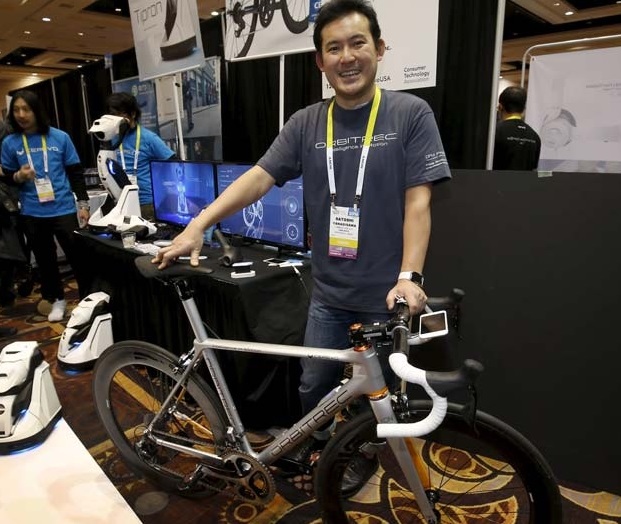LockH
1 PW
No suitable matches were found. (In ES search for "Orbitrec")
Seen here:
http://www.bike-eu.com/shows-events...rending-at-consumer-electronics-show-10125409

... and video here:
http://www.digitaltrends.com/cool-tech/cerevo-unveils-first-connected-3d-printed-bike/
w/comment "Cerevo also unveiled its RIDE-1 clip-on sensor which offers the same sensor capability for a fraction of the price."

Seen here:
http://www.bike-eu.com/shows-events...rending-at-consumer-electronics-show-10125409

Satoshi Yanagisawa of Japan displays the Orbitrec, a connected 3D printed bicycle by Cerevo. The bicycle features 3D printed titanium joints, carbon fiber tubes and a built-in sensor module that sends a variety of information to a smartphone.
... and video here:
http://www.digitaltrends.com/cool-tech/cerevo-unveils-first-connected-3d-printed-bike/
w/comment "Cerevo also unveiled its RIDE-1 clip-on sensor which offers the same sensor capability for a fraction of the price."
Tech-wise, both products boast a 9-axis accelerometer, angular velocity, and geomagnetism sensor, in addition to temperature, humidity, atmosphere, and illumination sensors. The sum of these parts offers users exact riding locations and velocity, as well as their lean and impact status related to the bike’s frame. Combined with the bike’s built-in GPS function, ride logs are easily recorded and stored for quick access and viewing.
Cerevo also includes Bluetooth (4.1) and ANT+ connectivity to either the ORBITREC or RIDE-1 clip-on, giving riders increased connectivity to a wide range of devices or services. What this means is that if someone connects their bike to a compatible smartphone, riders have the ability to set their lights up to automatically turn on when it gets darker, to send an SMS text to a friend in the event of a crash, or to change the bike’s suspension depending on ride location. It can even alert riders of upcoming road conditions or potential changes and threats to a planned route.
Additional specifications of the ORBITREC and RIDE-1 released by Cerevo show each uses a USB port for charging, boasts 15 hours of power, and is compatible with iPhones running iOS 8.3 or later. While the bike ranges in size depending on the rider, the RIDE-1 clip-on measures in at roughly six inches in length and just under two inches in width. Based on these dimensions, it figures to be a fairly inconspicuous addition to any bike frame, regardless of style or size.
The RIDE-1 clip-on module and ORBITREC feature the same exact included sensors, and the difference between the two lies primarily with price. Those interested in the 3D-printed titanium and carbon fiber frame should expect to pay upwards of $7,000 for their own ORBITREC while those interested in the RIDE-1 sensor can, of course, reasonably expect to pay much, much less. Though no exact prices were given (the spec-sheet says “unfixed”), Cerevo does anticipate launching both products by the spring of 2016 meaning official pricing shouldn’t be far off.

